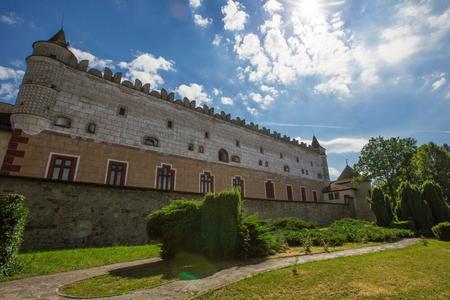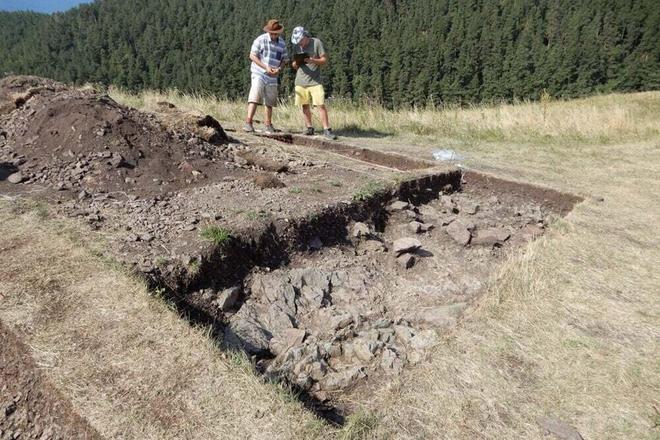During the past year, archaeologists carried out the first modern archaeological research focused on the Middle Ages in the High Tatras.
They focused on the location above Tatranská Lesná, where the findings confirmed one of the highest placed, if not directly the highest placed, mediaeval settlements in Slovakia.
As archaeologist Marián Soják from the Archaeological Institute of the Slovak Academy of Sciences (SAV) said, the settlement or location in the current Tatra National Park was, according to research, used not only in the second half of the 13th to the first third of the 14th century, but already in the times of the Earlier Iron Age, i.e. sometime between the 4th and 1st centuries BC.
Archaeologists assume that in the Middle Ages, the so-called lords of Lomnica took refuge there in times of danger. They were the ancestors of the well-known noble Berzeviczy family, which founded Veľká Lomnica.
Two to three settlements
Lidar images, i.e. laser imaging of the terrain without tree vegetation, raised questions about the mentioned location.
"Local historian Dušan Korytko noticed an anomaly on the map above Tatranská Lesná. He contacted us, and indeed, the images clearly show at least two settlements, maybe as many as three, with rampart fortifications and ditches," explained Soják for the SITA newswire.
He embarked on the research as part of a grant project together with the director of the Archaeological Institute of the Slovak Academy of Sciences, Matej Ruttkay.

The archaeologists discovered a really small fortification in a location called Cold Castle on old maps. It might be a small castle tower, according to experts.
However, the protected location is intensively covered with vegetation. It would have been close to impossible to have trees cut down due to research. In the end, experts focused on a higher-placed location with places suitable for research.
Celts in the Tatras
Therefore, at the beginning of July 2023, the archaeologists moved to Šiance, at an altitude of 1,030 metres.
"On the lidar image, as well as directly in the field, it's beautiful to see fortifications with ramparts, ditches and an access road. We placed the first probe directly on the acropolis, i.e. the top of the hill, where we uncovered the rest of the dry-stacked stone basement," the archaeologist Soják said.
Because of the surrounding large trees, it was possible to set out a probe with dimensions of four by six metres.
"We found a part of a log house with a dry stone foundation or the remains of a residential tower. We also found few but distinctive ceramics from the second half of the 13th to the first third of the 14th century," he explained, as quoted by SITA.
"Perhaps the Celts lived this high up, in the High Tatras, perhaps the Celtic Cotini had their stronghold there," suggested Soják.

Refuge
It was also possible to uncover the remains of a stone box, which could be a symbolic box grave, technically called a cenotaph, from the end of prehistoric times.
According to Soják, the question is what kind of people lived in the area.
He assumes that at the end of prehistoric times they were the surviving populations from the end of the Bronze Age, mixed with the Cotini. However, it is not yet known exactly what kind of people used the settlement in the Middle Ages.
"We assume that it was the so-called lords from Lomnica, i.e. the ancestors of the later well-known Berzeviczy family, who founded Veľká Lomnica. They had extensive properties there, but also in the Zamagurie region," the archaeologist believes.
The settlement thus apparently had the character of a refuge. Especially in the middle of the 13th century, people hid in forests and caves from Mongol-Tatar invasions.
Together with local historians, archaeologists are now searching for what the registered hillforts could be called in archival records.



 Research at Hradisko. (source: Adriana Hudecová/TASR)
Research at Hradisko. (source: Adriana Hudecová/TASR)